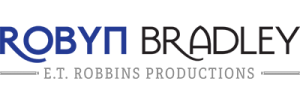Dear Copy Bitch: You often say to avoid semicolons. But I want to know how to use them correctly. Any tips?
—Punctuating in Poughkeepsie
Answer: Here’s the good news about semicolons: you have only two rules to remember. The first deals with sentences where you’re probably itching to put a comma, period, or semicolon, and you don’t know which one to choose. The second rule deals with items in a series where you’re already using some other form of punctuation within the series, most likely a comma.
Let me explain. (And I’m not going to explain these rules the way your English teacher would, talking endlessly about independent clauses and transitional expressions.)
The Copy Bitch’s Semicolon Rule #1:
What you need to remember about Rule #1 is this: whatever comes before the semicolon should be able to stand on its own as a sentence. Ditto for what comes after it.
Example:
Winning George Clooney isn’t everything; it’s the only thing.
I could have just as easily written this: Winning George Clooney isn’t everything. It’s the only thing.
Here’s another example of proper semicolon usage:
I’m supposed to go to the movies tomorrow; however, the weather will likely interfere with my plans.
What comes before the semicolon could stand alone as its own sentence. And what comes after the semicolon could stand alone as its own sentence.
Notice the word “however,” which is called a conjunctive adverb. Other conjunctive adverbs include therefore, moreover, hence, and furthermore. These words are used as transitions between two independent clauses, and they should be followed by a comma.
See? This is one of the reasons why I tell people to avoid semicolons. The problem is that so many people don’t know how to use them correctly. The other reason? Go back and re-read the two George Clooney sentences above. Even though they mean the same thing, the punctuation does have a subtle effect on how your mind reads it (you might be unaware of this effect, that’s how subtle it is, but it’s there).
I think you should haul a semicolon out of your bag o’writing tricks when the piece you’re working on calls for this effect. But that means using the semicolon once or twice, not every sentence or every other sentence. Copywriters and business writers should avoid semicolons 99.9 percent of the time (there’s always an exception). And even creative writers should have a darn good reason for littering a page with ’em, at least in this copy bitch’s not-so-humble opinion.
By the way, do NOT think that semicolons and commas are interchangeable. They are not. If you put a comma in place of the semicolon in the examples above, you have what’s called a “comma splice.” And it’s illegal. You could be arrested. Consider yourself warned.
The Copy Bitch’s Semicolon Rule #2
This rule isn’t optional. If you’re writing a sentence that includes a series and within that series you use some sort of punctuation (most likely a comma), you must use a semicolon to separate the items in the series. It’s for clarity’s sake.
Example:
Last summer, I visited Boston, Massachusetts; Baltimore, Maryland; and George Clooney’s birthplace.
Want to see the semicolon in brilliant action? Read “Letter from a Birmingham Jail” by Martin Luther King, Jr. Check out the 12th paragraph (but if you’ve never read the whole thing, you should…it’s a powerful piece of writing).
